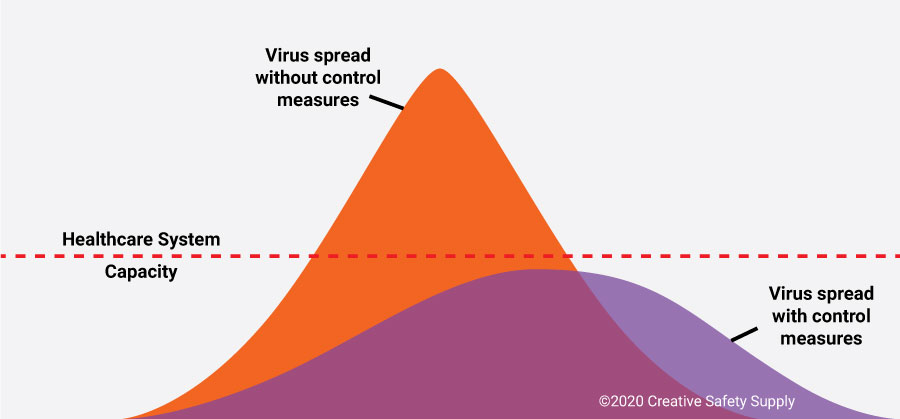
A simple chart and the advice to help "flatten the curve" have become critical to our efforts grappling with the new coronavirus. Countries like Italy have faced a rapid growth rate resulting in hospitals reaching capacity, emergency rooms closing their doors, and a shortage of basic emergency medical equipment. Slowing the rate of infection is intended to prevent a surge of COVID-19 cases that would overwhelm the healthcare system, ultimately causing more deaths; epidemiologists and public health officials call this "flattening the curve."
Working to mitigate the pandemic slows down the number of new cases which in turn reduces the number of active cases and people seeking treatment at any given time. Although it is impossible to completely halt the spread of infection, slowing it is critical to saving lives. The CDC and World Health Organization stress the importance of slowing the transmission of COVID-19 so hospitals don’t have to get to the point where patients may be forced to go without beds and personnel run out of basic medical supplies.

How To Flatten the Curve
In order to stagger the rate of coronavirus cases, we must work individually and collectively to follow protective measures. Social distancing, maintaining a distance of 6 feet from others, is key to slowing the spread of COVID-19. We have seen professional sports leagues postpone their games, artists canceling their concerts, museums closing down for the month, and movie theaters shuttering their doors. These might seem like dramatic actions, but by staying home, washing our hands often, and disinfecting surfaces we are doing our part to flatten the curve.
Why is it important to flatten the curve?
On an average day without coronavirus, many hospitals and emergency rooms are already operating close to capacity. Without precautions in place, a sharp spike of new cases has the potential to inundate the number of beds and care teams available in our country. In addition, slowing the spread buys time for scientists and medical professionals to create new therapies, medications, and possibly a vaccine. Together, we can take steps to flatten the curve and protect our communities.
Similar Questions
- What is the difference between social distancing vs. quarantine?
- Will social distancing continue after the lockdown?
- Why should social distancing be practiced?
- How long will social distancing last?
- Why is social distancing important?
- What is the scale of social distancing?
- What is the difference between social distancing and physical distancing?
- Why is social distancing still important?
- What are social distancing recommendations?

